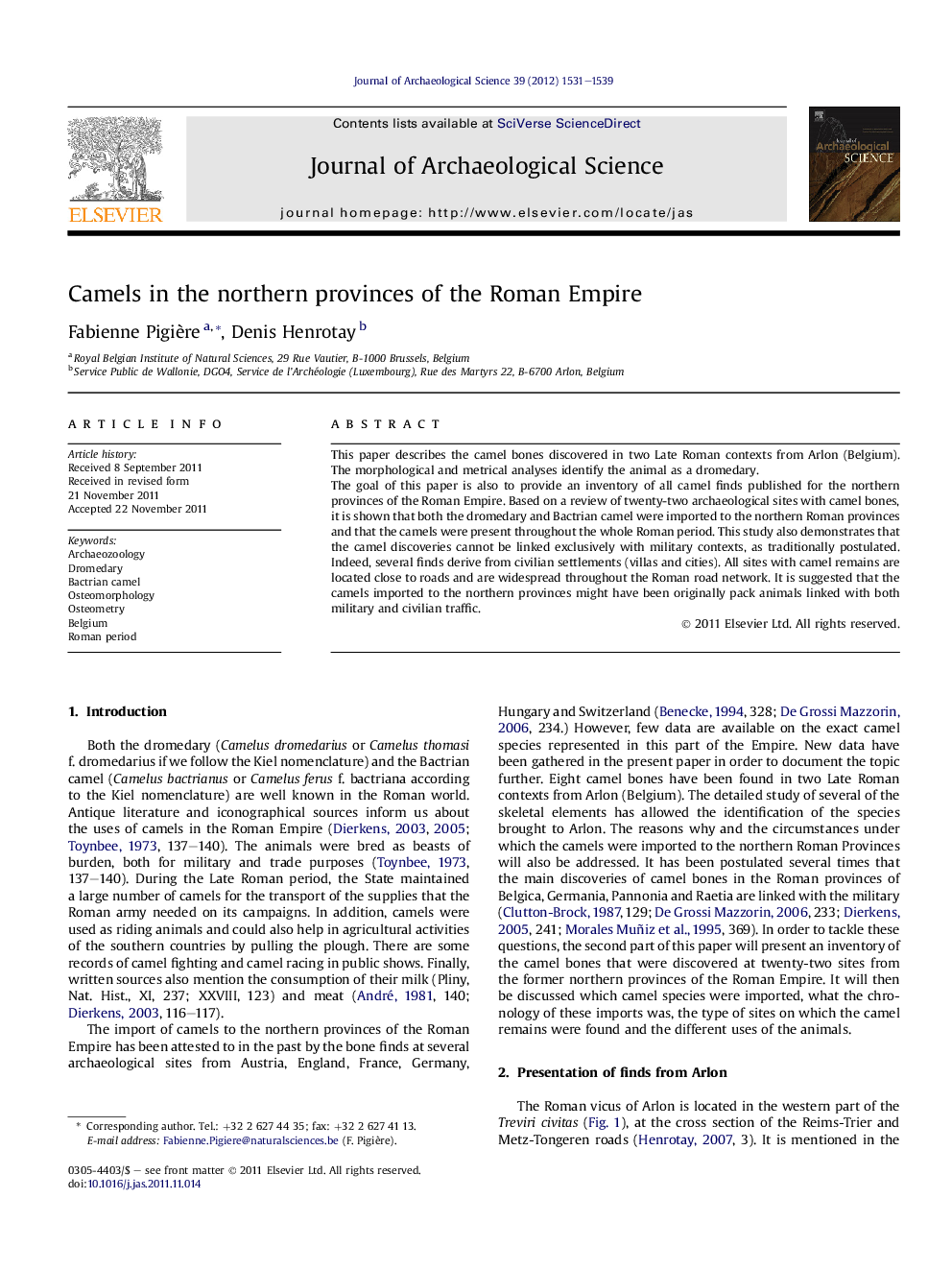| Article ID | Journal | Published Year | Pages | File Type |
|---|---|---|---|---|
| 1035771 | Journal of Archaeological Science | 2012 | 9 Pages |
This paper describes the camel bones discovered in two Late Roman contexts from Arlon (Belgium). The morphological and metrical analyses identify the animal as a dromedary.The goal of this paper is also to provide an inventory of all camel finds published for the northern provinces of the Roman Empire. Based on a review of twenty-two archaeological sites with camel bones, it is shown that both the dromedary and Bactrian camel were imported to the northern Roman provinces and that the camels were present throughout the whole Roman period. This study also demonstrates that the camel discoveries cannot be linked exclusively with military contexts, as traditionally postulated. Indeed, several finds derive from civilian settlements (villas and cities). All sites with camel remains are located close to roads and are widespread throughout the Roman road network. It is suggested that the camels imported to the northern provinces might have been originally pack animals linked with both military and civilian traffic.
► We describe the remains of a Late Roman dromedary from a site in Belgium. ► A review of camel finds from 22 sites in the northern Roman provinces is provided. ► Both dromedary and Bactrian camel were imported throughout the whole Roman period. ► Camel discoveries derive from both military and civilian settlements. ► They might have been pack animals linked with the traffic on the Roman road.
